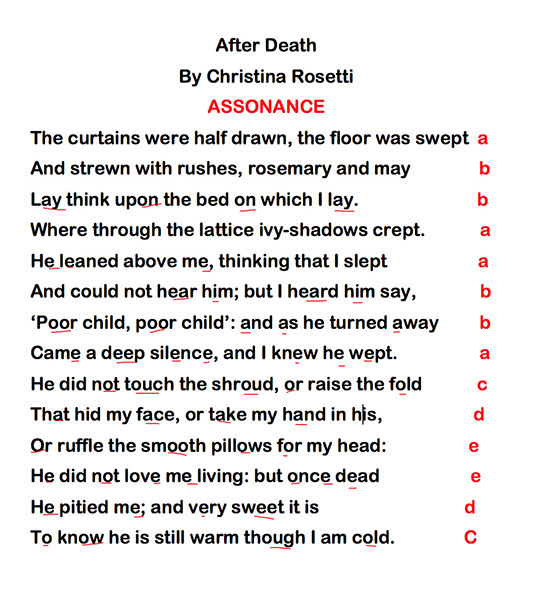"After Death"
by Christina Rossetti
A New Critical Theory Analysis
By Ashley Zizich
.jpg?crc=496369379)
Alliteration is derived from Latin’s “Latira”. It means “letters of alphabet”. It is a stylistic device in which a number of words, having the same first consonant sound, occur close together in a series. Alliteration does not depend on letters but on sounds. Alliteration helps to create a mood in poetry. The alliteration of "s" and "r" sounds in the first two lines help create a sweeping rhythm with the "s" sounds that leads to the harshness of reality of death with the "r" sounds.

Like alliteration, assonance involves the repetition of certain sounds. Alliteration is the repetition of consonants at the beginning of words, assonance is the repetition of vowel sounds within words. Both devises are used by poets to create rhythm. Assonance is more subtle than alliteration.
Examples of assonance in this sonnet can be seen within the underlined parts of each line. Lines 7 through 9 provide good examples of how this device works. The "oo" sounds in the word "poor" create a slowing rhythm reminiscent of mourning. The "e" sounds in the following line create a sense of seeing what is happening in the sonnet. Line 9 creates a mixing of "o" and "ou" sounds that make the rhythm go high into low, marking for emotion.